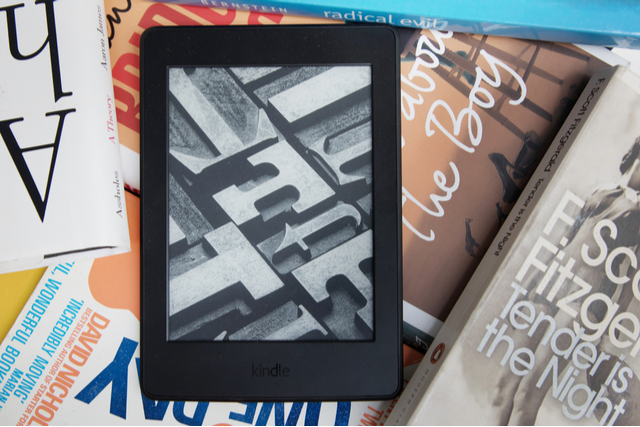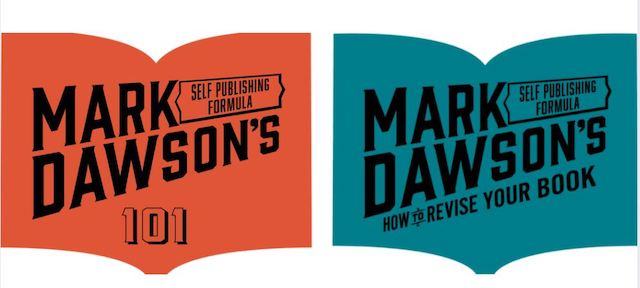
There’s never been a better time to be a writer.
I say that a lot over at Self Publishing Formula, but it’s true. For centuries, the only way to get published was to go through industry gatekeepers. Now, anybody can get their book into the hands of readers around the world.
When I started writing at the end of the 1990s, there was only one path open to me: traditional publishing. Once I’d finished my manuscript, I would send the first three chapters and a covering letter to one of the dozens of literary agencies that accepted unsolicited submissions.
Let’s assume that the agent liked my writing enough to represent me and my book. They would then send the book to a list of potential publishers. And let’s also say that one of those publishers thought my book was the right fit for the market at that time and decided to publish it. The book would be sent through a rigorous editorial process, given a brand new cover…
…and would eventually be published 18 to 24 months later.
Yikes.
Once published, it would then go up against the dozens of other books released that week (or, as was the case on September 3rd 2020 in the UK, six hundred other books released that day). If I only received a small advance – most likely for a new, unproven author – the book might get a small promotional budget. It might even get a slot on one of the tables at the front of the store (yes, these have to be paid for).
But, most likely, it would be put into a section of the store, spine out, and largely forgotten about.
But What About the Money?
Let’s assume you do get an advance. If you get $20,000 for a single book (let alone your first book) then you’re already doing well. Between 10% and 15% of that will go to your agent, and the rest will be paid to you in installments: e.g. one third when you sign the deal, one third upon releasing the hardback, and the final third when the mass market paperback is published.
You’re probably looking at three payments of about $6,000 each – before tax – spread out across those 18 to 24 months. In the unlikely event that you sell enough books to pay back the advance, you’ll then be looking at a royalty per sale of around 10%.
That means you’re getting $1 for every $10 book sold. Your agent will take, say, 15% of that, leaving you with 85 cents per copy sold.
As you can hopefully already see, you need to sell a lot of books if you want the traditional model of publishing to work for you financially. No wonder most authors aren’t full time.
How Do I Know All This?
Because this is exactly what happened to me.
My first two books were published by a big publisher. I had a great agent and a great editor. The staff I worked with were really excellent. I was taken out and given a great deal of red wine. I really did have a very enjoyable time.
I was ecstatic to sign that publishing contract. I thought, naïve as I was, that by giving up around 85% of the cover price I would be getting a lot of promotional push in return. I wasn’t expecting billboards or ads on the sides of London buses… but I expected something.

To this day, I’m still not entirely sure what they did to push the books, if anything. I was given a box of copies and told to get reviews. I remember thinking, as I trekked back and forth to the Post Office: wasn’t my publisher supposed to do that for me?
Well, at least they did a great job on the covers… right?
Wrong. I’d been looking forward to seeing the covers, but they turned out utterly miserable. I probably could have done better myself.
The books sold pitifully. They were shelved incorrectly and in what might charitably be described as unappealing real estate (either at the feet of browsing customers or so high that shorter readers would need a ladder to liberate them).
Like any newly published author, I rearranged the shelves so that my books were at eye level. Unfortunately, the efficient staff quickly returned them to their rightful places.
With no promotion and no marketing, my first two books sank without a trace. They most likely ended up in a landfill somewhere. After that, things started to go downhill very fast. My publisher dropped me. My agent dropped me, and I couldn’t find another.
My dream of becoming a full-time author had been raised up and then dashed. I gave up. I stopped writing completely and concentrated on my day job of being a lawyer.
So what changed?
The Kindle was invented.
It was now possible for authors to publish their books without the need for an agent or publisher. I had a friend who was getting daily emails from readers who had enjoyed his books. He was actually making money.
It was revolutionary.
I got back into the game. I published my first indie title in 2012 and I’ve never looked back since. The results have been life changing.
- I quit my job.
- I have had thousands upon thousands of reviews.
- I’ve sold more than three million copies of my books.
- I make seven-figures a year from the silly little stories in my head.
And yes – I also get emails every single day from readers all around the world telling me how much they love my books.
That’s why this is one of the first things I wish I’d known when I wrote my first book:
Indie is not a dirty word.
Look at it in financial terms. The self-publishing platforms will give you up to 70% of the price of the eBook. I tend to price my books at around the $5 mark. That means that I receive about $3.50 for every book that I sell.
Compare that to the 85 cents I stand to make per copy on a traditional deal for a book that costs twice as much.
So, should we ignore traditional publishing? Certainly not.
Books don’t sell themselves, and authors who aren’t prepared to step out of their writing dens to get busy with the base matters of promotion and marketing would be better advised to seek out a deal whereby that activity can be handled by somebody else.
That said, traditional publishers expect new authors to take on more and more of those roles themselves anyway.
At the end of the day, I’m agnostic about the form the book takes. It could be a dead tree or a collection of electrons – it makes no difference to me at all. The most important thing is the story, and a book or an eBook is just the means of transmitting that story from writer to reader.
I think it is unlikely that eBooks will lead to the end of the printed book. But on the other hand, I don’t think we’re anywhere near the level of penetration that eBooks will eventually garner.
5 Steps to Building a Successful Author Career
So, how did I go from stopping writing completely to earning good money by doing what I love?
I followed these five steps.
Step 1: Mailing Lists
The most important thing that a new author can do is build a mailing list. They’re inexpensive, easy to set up, and they open up so many opportunities that you would be remiss in putting it off. I love Amazon and Facebook, but they’re never going to give me the email addresses of my readers. They have their reasons for that – both proprietary and legal.
And that leaves us in a slightly precarious position.
What if Amazon or the other retailers go bust or change their business model? How can we get our readers to follow us elsewhere?
Facebook and other social media channels already charge us to reach our followers – what if they change their algorithms (again) and make it even more difficult?
There are a lot of “what ifs.” The best way to insulate against decisions and events outside of our control is to establish a list of readers ourselves. This way, we own and control our means of reaching our readers. An email mailing list is the single best way to reach our readers and the most important asset that an author can have.

What can I use a mailing list for?
Good question. Here are some of the valuable things that I’ve got out of my list:
- Told my readers that I have a new book out (and promptly saw them launch it into the top 100 of the whole Amazon store)
- Recruited readers to my Advance Team and had them spot errors that had slipped through my editorial process
- Found expert readers who were able to correct factual errors that I’d made (for example, ballistics experts who correct my shocking lack of knowledge when it comes to the weapons John Milton uses)
- Put out a call for my readers to consider voting for me for a UK thriller award
- Built a lookalike audience for Facebook advertising
- Asked my readers to consider leaving an honest review so that I could increase the odds of landing an influential promotion (and subsequently got 50 reviews in less than 24 hours)
So, how do we build a list?
There are two ways: manual and automatic.
If you’re on a shoestring budget, you could leave your email address in the back of your book and invite your readers to reply if they would like to be added to your mailing list. Whenever somebody gets in contact, you copy their email address and paste it into a spreadsheet. If you’ve offered them something in exchange for signing up, you’ll have to email them back with whatever it is you’ve promised.
I did this for a few months at the start of my career. It works, up to a point. But it’s also incredibly time consuming. What’s more, you’re quite likely to get flagged as spam when you try to bulk send out emails to everyone at the same time.
That’s the manual way. Here’s the automatic (and much more recommended) way.
First of all, you’ll need an email list service provider. There are loads to choose from, with Mailchimp and Mailerlite the two most popular (and user-friendly) options for authors.
Once you’ve set up your account, you’ll need to put the sign-up URL in as many locations as you can. I would recommend:
- The front and backs of your books
- Your retailer product pages
- Your website
- All of your social channels
One extra thing: it’ll increase the flow of sign-ups to your list if you offer something in return for subscribers’ email addresses. It could be a novel, a novella, or even an exclusive one-sheet.
Step 2: Build Momentum with a Series
There is no right or wrong way to write books, of course. But, at least in my experience, it is much easier to get momentum behind a writing career if you write in series. There are plenty of reasons why that is the case:
1. You can write quicker.
You can write more quickly if you have a world and characters established that you can then return to again and again. When I am writing a new Milton or Rose book, all I have to do is think of an interesting plot that my existing characters can be involved in.
2. You'll achieve "read-through."
If you write the kind of series where the character(s) becomes the “hook,” you’ll start to see what writers refer to as “read-through.” In other words: if a hundred readers read the first book in the series, perhaps sixty will go on to read the second book and fifty people the third. This is organic – you don’t have to pay for it to happen.
3. You’ll establish a brand on the retailers.
Series books will typically share plenty of characteristics in regard to cover design – fonts, characters, tone, etc. Each of my series has its own distinct visual style for readers to identify them easily on the Amazon store, and it makes it obvious to any new readers that I’m a serious author with plenty of books behind me.
4. Some readers just prefer to read series.
They like to know that, if they enjoy the first book that they read, there will be others they can enjoy afterwards.
5. You can put “box sets” together and then advertise them.
My highest selling items are sets of books. The box set for the first three books in my Milton series goes for about $6.99, and the increased revenue means that my advertising doesn’t have to covert at such a fast rate to still maintain a decent margin.
Step 3: Advertising
Unfortunately, it’s not enough to just stick a book up on Amazon and hope for the best. The best way to get your book into the hands of readers, as with all products and all audiences, is to advertise it.
I’m best known in the author community for my work teaching others how to use social media ads to find readers and sell books. I’ve spent hundreds of thousands of dollars on ads in total – over $400,000 between 2015 and 2017 alone.
Don’t let that figure put you off, however. You don’t need a big ad spend to make them work, and that large number made an even larger return, so was very profitable.

Let’s compare how effective digital advertising is against a more traditional method.
Consider a billboard ad at a railway station – it’s for a romance novel that would appeal to the readers of Nora Roberts. Of all the people who see that ad, around 50% (most of the men) can be discounted immediately. Of the remaining 50%, a good percentage won’t be interested in romance. Of the remainder, plenty will have no interest in Nora Roberts.
We can see, therefore, that we’ve likely lost almost all of the audience who saw the ad. But we’ve paid for the platform based on potential eyeballs, whether they’re interested in what we’re selling or not.
Then there’s Facebook. I can target my ad so that it’s seen by women, perhaps between the ages of 40 and 60, who have indicated that they read on a digital device and that they love the works of Nora Roberts.
The difference should be pretty clear. And that’s barely scratching the surface of what’s possible. I haven’t mentioned re-targeting ads (the ads that follow you on the internet if you’ve visited a website), video ads, lead generation ads, carousel ads, messenger ads…
Many traditional publishers still use inefficient, expensive, and badly targeted methods of reaching readers. Social media ads give indie authors a big advantage.
Step 4: Focus on Quality
As I mentioned earlier, the gatekeepers to publishing are gone (or at least, they can’t stop you from getting in anymore). Of course, that means that there’s no form of quality control either. You could, if you so wished, publish a book littered with spelling mistakes with a cover you made yourself in Microsoft Paint and put absolutely zero marketing push behind it.
But the odds of finding readers, let alone impressing those readers, is next to non-existent.
One of the biggest mistakes I made was to publish my first book without first putting it through a rigorous quality check to ensure it was as clean and professional as possible. (Unfortunately, ProWritingAid wasn’t on my radar at the time.)
Traditional publishers put out carefully edited books with professional covers. Those are the minimum standards we should apply to our own books, too. Readers don’t care how a book was published, but they do care whether the author has high standards or not.
“But how can I pay for all this?” I hear you ask.
I have good news.
A lot of really superb artists and editors now work with indie authors, especially since the traditional side of the industry started contracting a few years back. There are plenty of places where you can meet these experts, including marketplaces such as Reedsy.com.
Don’t be tempted to go to a publisher who will offer to handle all of this work for you in exchange for a fee. Quite often, the fee will be extortionate. You can do all of this yourself.
How much does it cost to self publish?
Not as much as you might think. Here’s a cost breakdown for one of my earlier Milton books.
• Cover = £300
• Copy-editing = £500
• Proofreading = £200
That’s £1,000 in total. I’m experienced enough now to forego a developmental editor, but if you choose to add that to the list then expect to pay around the same price as a copy-editor. And of course there are ways to bring that price down – if you’re great on Photoshop, perhaps you could design a book cover in exchange for somebody with editorial experience carrying out a copy-edit on your manuscript.
Step 5: Never Stop Learning
Just because there are more opportunities to make a living from your writing than ever before doesn’t mean that it’s easy. It isn’t.
There are no shortcuts to success. You need to be prepared to work hard. It might take long hours and some money, too.
I started self-publishing in 2012 and it was only in November 2014 that I finally felt confident enough to quit my lawyer job and write full time. I made plenty of mistakes along the way, but every mistake was just a step towards figuring out what works. Even now, I’m adapting, improving and refining my process every single day.
If you’re ready to commit to a career as a writer, follow these five steps to give yourself the best chance of success.
Want to learn more from Mark Dawson?
You can sign up for his courses here:
How to Revise Your Book with Jennie Nash
In this brand new course, Book Coach Jennie Nash will take you through the revision process itself and show you how to recognize when your novel is ready for prime time. With modules to help you build a model of your novel, strengthen your characters, tighten your narrative arc, prioritize your problems and execute fixes. You will come away with a polished manuscript that's ready to put in the hands of readers.
This course also includes a new bonus module on effective copy editing by ProWritingAid's very own Hayley Milliman.


